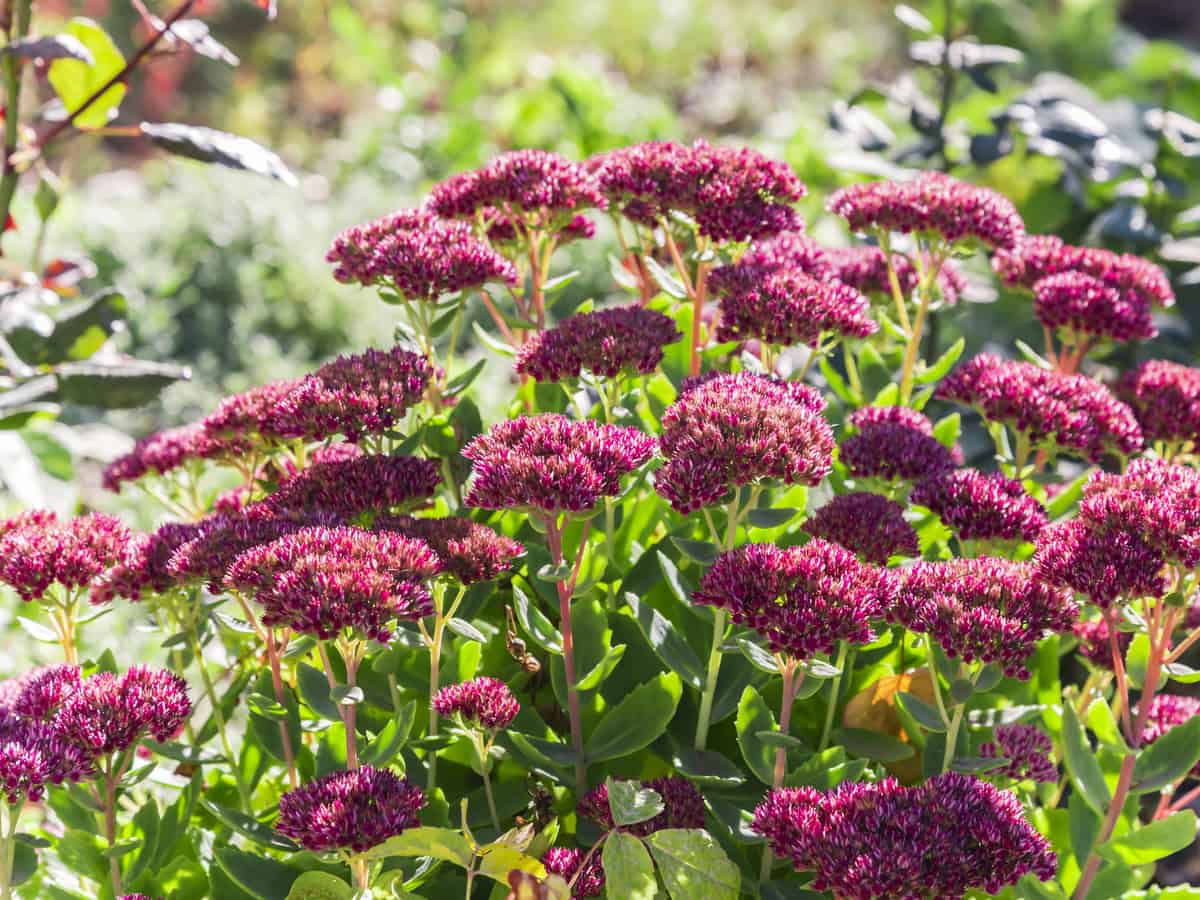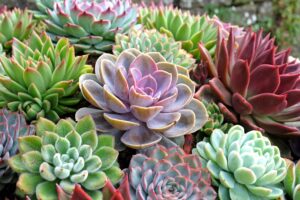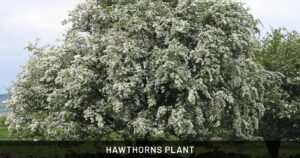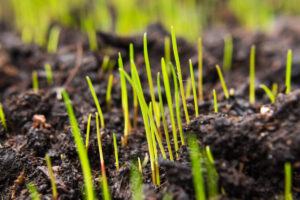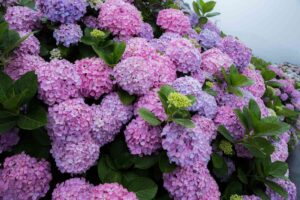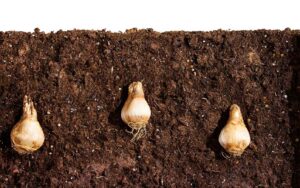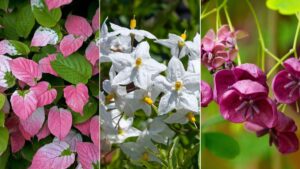Hardy Perennials That Provide Continuous Color Each Year
Are you tired of replanting your garden every season? Looking for beautiful, low-maintenance plants that come back stronger year after year while providing continuous color? Hardy perennials are the answer to your gardening dreams. These resilient plants establish deep root systems that allow them to survive harsh winters and return each spring with renewed vigor, offering reliable beauty and savings on your gardening budget.
In this comprehensive guide, you’ll discover the best hardy perennials for continuous color throughout the growing season, learn how to plan a four-season perennial garden, and get expert tips for maintaining these garden workhorses for years of enjoyment.
Why Choose Hardy Perennials for Your Garden?
Hardy perennials offer numerous advantages over annuals and tender perennials:
- Cost-effective: While the initial investment might be higher than annuals, perennials return year after year without repurchasing.
- Environmentally friendly: Established perennials typically require less water and fewer chemical inputs than annuals.
- Time-saving: Once established, most hardy perennials require minimal maintenance.
- Increasing beauty: Many perennials grow more impressive and floriferous with each passing year.
- Wildlife support: Native perennials provide essential habitat and food for pollinators and beneficial insects.
According to the USDA Natural Resources Conservation Service, incorporating native perennials into your landscape not only ensures hardiness but also supports local ecosystems and biodiversity.
Planning Your Four-Season Perennial Garden
The key to achieving continuous color is thoughtful planning and plant selection. You’ll want to incorporate perennials with different bloom times, from early spring through late fall, and even some with winter interest through attractive seedheads, berries, or evergreen foliage.
Understanding Hardiness Zones
Before selecting perennials, you need to know your USDA hardiness zone. This will determine which plants can reliably survive winter in your region.
The continental United States spans hardiness zones 3-10, with Zone 3 experiencing minimum temperatures of -40°F to -30°F and Zone 10 rarely dipping below 30°F to 40°F.
You can find your specific hardiness zone by visiting the USDA Plant Hardiness Zone Map, which was updated in 2023 to reflect changing climate patterns.

Early Spring Bloomers (February-April)
Early spring perennials bring welcome color after winter’s dormancy. These plants typically bloom when temperatures are still cool and days are just beginning to lengthen.
- Hellebores (Helleborus orientalis): Also known as Lenten roses, these shade-tolerant perennials offer nodding blooms in white, pink, purple, and speckled varieties from February through April. Hardy in zones 4-9.
- Creeping Phlox (Phlox subulata): Creates a carpet of pink, purple, or white flowers in early spring. Hardy in zones 3-9.
- Bloodroot (Sanguinaria canadensis): A native woodland perennial with pristine white flowers in early spring. Hardy in zones 3-8.
- Virginia Bluebells (Mertensia virginica): Native wildflowers with hanging clusters of sky-blue flowers. Hardy in zones 3-8.
- Primrose (Primula vulgaris): Cheerful yellow, pink, purple, or white blooms that signal spring’s arrival. Hardy in zones 4-8.
Late Spring to Early Summer Bloomers (May-June)
As temperatures warm, the garden explodes with color from these reliable performers:
- Bearded Iris (Iris germanica): Available in virtually every color of the rainbow, these elegant flowers bring drama to late spring gardens. Hardy in zones 3-9.
- Peony (Paeonia lactiflora): Long-lived perennials (some plants live over 100 years!) with luxurious blooms in white, pink, coral, and red. Hardy in zones 3-8.
- Columbine (Aquilegia spp.): Dancing flowers in bi-colors with distinctive spurred petals. Hardy in zones 3-9.
- Baptisia (False Indigo): Native perennial with lupine-like flower spikes in blue, yellow, or white. Hardy in zones 3-9.
- Salvia (Salvia nemorosa): Spikes of purple, blue, pink, or white flowers that attract pollinators. Hardy in zones 4-9.
Summer Bloomers (July-August)
These heat-tolerant perennials take center stage during the hottest months:
- Echinacea (Purple Coneflower): Native prairie plants with daisy-like flowers in purple, white, yellow, orange, or red. Hardy in zones 3-9.
- Daylilies (Hemerocallis): Available in thousands of cultivars with flowers in nearly every color except true blue. Hardy in zones 3-9.
- Bee Balm (Monarda): Shaggy, colorful flowers that attract hummingbirds and butterflies. Hardy in zones 4-9.
- Black-Eyed Susan (Rudbeckia): Cheerful golden daisies with dark centers that bloom profusely. Hardy in zones 3-9.
- Russian Sage (Perovskia atriplicifolia): Hazy spires of lavender-blue flowers with silver foliage. Hardy in zones 4-9.
Fall Bloomers (September-November)
As summer fades, these late-season stars keep your garden colorful:
- Asters (Symphyotrichum): Daisy-like flowers in purple, pink, or white that support fall pollinators. Hardy in zones 3-8.
- Sedum (Hylotelephium): Succulent perennials with flat clusters of tiny star-shaped flowers in pink, red, or white. Hardy in zones 3-9.
- Japanese Anemone (Anemone × hybrida): Elegant single or semi-double flowers on tall stems. Hardy in zones 4-8.
- Turtlehead (Chelone lyonii): Native perennial with pink snapdragon-like flowers. Hardy in zones 3-8.
- Goldenrod (Solidago): Native wildflowers with plumes of golden yellow blooms. Hardy in zones 3-9.
Winter Interest (December-January)
While not flowering, these perennials offer attractive features during winter:
- Hellebores (Helleborus niger): Christmas rose blooms in mild-winter regions from December to February. Hardy in zones 4-9.
- Ornamental Grasses: Many varieties, like Miscanthus and Panicum, provide structure, movement, and sound through winter. Zones vary by species.
- Evergreen Perennials: Plants like Heuchera (Coral Bells) and Bergenia maintain colorful foliage through winter. Hardy in zones 4-9.
Top 20 Hardy Perennials for Continuous Color
The following table highlights 20 exceptional hardy perennials that offer remarkable color, reliability, and longevity across various US growing zones:
| Plant Name | USDA Zones | Bloom Time | Flower Color | Height | Light Requirements |
|---|---|---|---|---|---|
| Hellebore | 4-9 | Feb-Apr | White, pink, purple, green | 12-18″ | Partial shade |
| Creeping Phlox | 3-9 | Mar-May | Pink, purple, white | 4-6″ | Full sun |
| Peony | 3-8 | May-Jun | White, pink, red | 24-36″ | Full sun |
| Iris (Bearded) | 3-9 | May-Jun | All colors | 24-40″ | Full sun |
| Baptisia | 3-9 | May-Jun | Blue, yellow, white | 36-48″ | Full sun/part shade |
| Salvia | 4-9 | May-Jul | Purple, blue, pink, white | 18-24″ | Full sun |
| Coreopsis | 4-9 | Jun-Sep | Yellow, red, bicolor | 12-24″ | Full sun |
| Echinacea | 3-9 | Jun-Aug | Purple, white, yellow, orange | 24-36″ | Full sun |
| Daylily | 3-9 | Jun-Aug | Nearly all colors | 12-36″ | Full sun/part shade |
| Bee Balm | 4-9 | Jul-Aug | Red, pink, purple | 24-48″ | Full sun/part shade |
| Rudbeckia | 3-9 | Jul-Oct | Yellow, orange | 24-36″ | Full sun |
| Agastache | 5-9 | Jul-Oct | Purple, blue, orange | 24-36″ | Full sun |
| Russian Sage | 4-9 | Jul-Sep | Lavender-blue | 36-48″ | Full sun |
| Sedum | 3-9 | Aug-Oct | Pink, red, white | 12-24″ | Full sun |
| Aster | 3-8 | Aug-Oct | Purple, pink, white | 12-48″ | Full sun |
| Japanese Anemone | 4-8 | Sep-Nov | Pink, white | 36-48″ | Part shade |
| Heuchera | 4-9 | Foliage | Purple, amber, lime | 8-12″ | Part shade |
| Ornamental Grass | 4-9 | Plumes | Tan, silver | 36-72″ | Full sun |
| Chrysanthemum | 5-9 | Sep-Nov | All colors | 12-36″ | Full sun |
| Bergenia | 4-9 | Apr-May | Pink | 12-18″ | Part shade/shade |
Designing with Hardy Perennials
Color Combinations and Succession Planting
The art of designing a continuously colorful perennial garden involves planning for succession of bloom and harmonious color combinations.
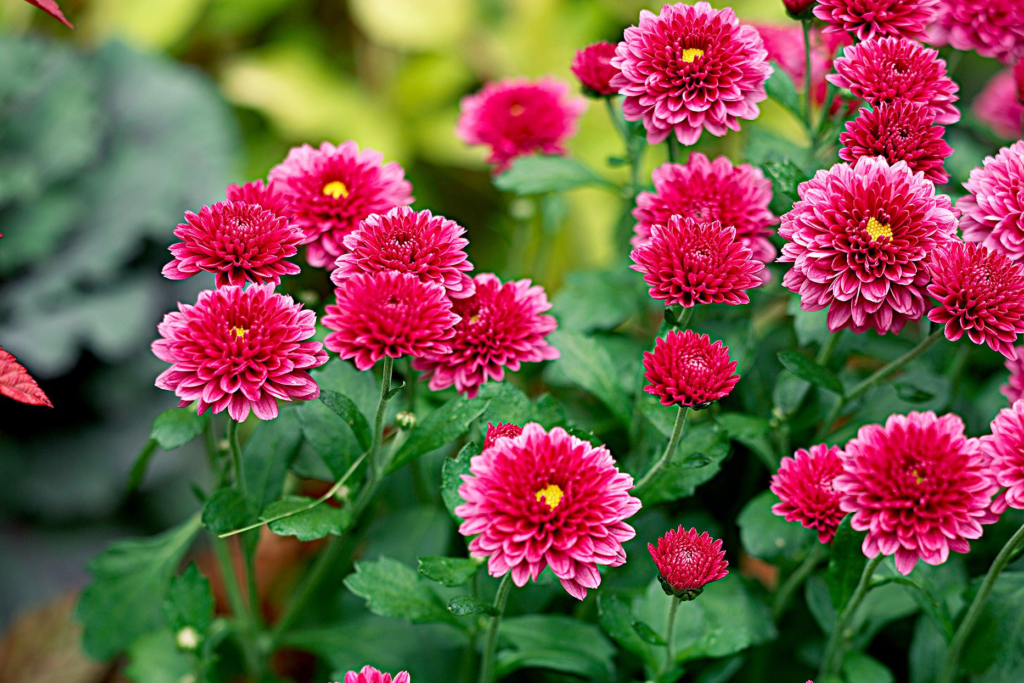
Succession Planting Techniques
Succession planting ensures something is always blooming in your garden. Here’s how to implement it:
- Layer your plantings: Place spring bulbs beneath summer and fall-blooming perennials.
- Mix early, mid, and late bloomers: In each garden section, include plants from different bloom periods.
- Consider foliage: Select plants with attractive leaves that provide interest even when not in bloom.
- Include structure plants: Ornamental grasses and evergreen perennials maintain garden structure year-round.
Strategic Color Planning
The following table provides suggested color combinations for each season:
| Season | Primary Colors | Companion Colors | Example Plant Combinations |
|---|---|---|---|
| Spring | Pastels (pink, lavender, yellow) | White, lime green | Hellebores + Creeping Phlox + Primrose |
| Early Summer | Strong colors (blue, purple, pink) | Silver, white | Baptisia + Salvia + Bearded Iris |
| Mid-Summer | Hot colors (yellow, orange, red) | Deep purple, blue | Echinacea + Daylilies + Bee Balm |
| Late Summer | Jewel tones (purple, ruby, gold) | Bronze, copper | Rudbeckia + Russian Sage + Sedum |
| Fall | Warm tones (gold, orange, burgundy) | Purple, blue | Asters + Chrysanthemums + Ornamental Grasses |
| Winter | Silver, copper, burgundy | Evergreen | Ornamental Grasses + Heuchera + Bergenia |
How to Create Garden “Rooms” for Year-Round Interest
To maximize continuous color, consider dividing your landscape into distinct areas that showcase seasonal highlights:
- Spring spotlight garden: Place near entrances where early blooms can be appreciated.
- Summer border: Allocate your sunniest spot for heat-loving summer perennials.
- Autumn showcase: Create a dedicated space visible from indoor living areas for fall color.
- Winter interest garden: Position ornamental grasses and evergreen perennials where low winter sun will highlight them.
Maintenance Tips for Long-Lasting Perennial Gardens
With proper care, many perennials will thrive for years or even decades in your garden.
Essential Seasonal Maintenance Calendar
Spring Tasks:
- Cut back dead foliage from winter
- Divide overcrowded spring-blooming perennials after flowering
- Apply a thin layer of compost around plants
- Add mulch to conserve moisture and suppress weeds
Summer Tasks:
- Deadhead spent flowers to encourage reblooming
- Water deeply during dry periods
- Support tall plants with stakes or cages before they flop
- Monitor for pests and diseases
Fall Tasks:
- Divide overcrowded summer and fall-blooming perennials
- Leave seedheads for winter interest and bird food
- Cut back diseased foliage but consider leaving healthy plant structure for winter
- Apply a layer of leaf mulch for winter protection
Winter Tasks:
- Avoid walking on frozen perennial beds
- Check for frost-heaved plants after freeze/thaw cycles
- Plan next year’s additions and changes
- Order seeds and plants for spring
Dividing and Rejuvenating Mature Perennials
Most perennials benefit from division every 3-5 years to maintain vigor and flowering performance. Here’s when to divide common perennials:
- Spring: Divide fall-blooming perennials like asters, mums, and sedum
- After spring bloom: Divide spring bloomers like primrose, bleeding heart, and iris
- Fall: Divide summer bloomers like daylilies, echinacea, and bee balm
According to the National Gardening Association, dividing perennials not only rejuvenates plants but also allows you to expand your garden or share with friends at no cost.
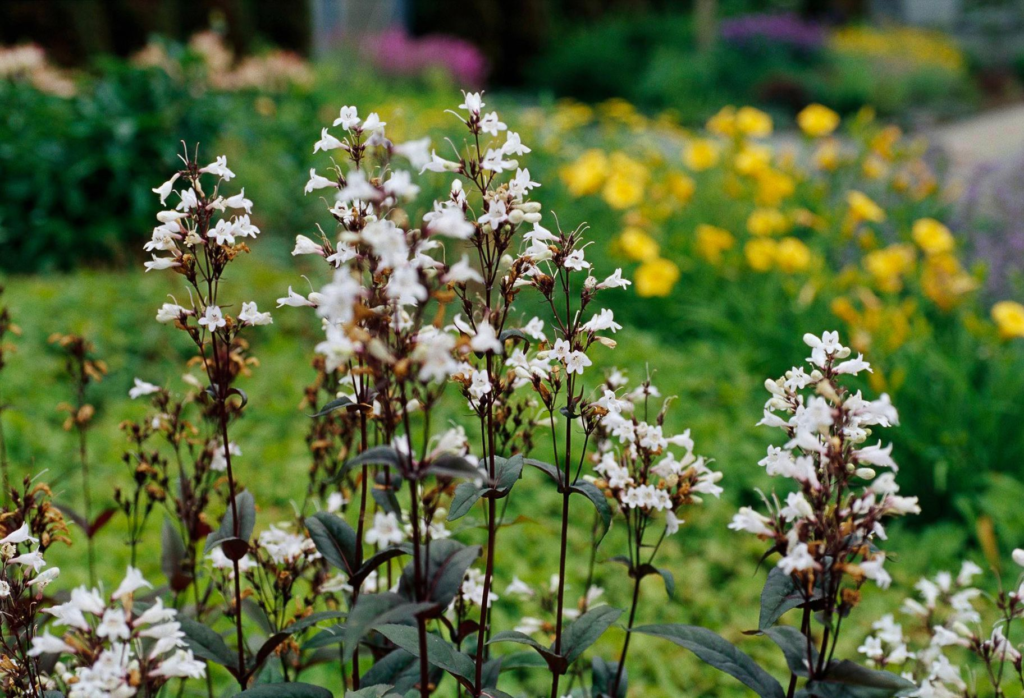
Troubleshooting Common Perennial Problems
Even hardy perennials can face challenges. Here are solutions to common issues:
Pest and Disease Management
- Powdery mildew: Common on bee balm, phlox, and asters. Improve air circulation, choose resistant varieties, and apply organic fungicides if necessary.
- Aphids: Control with strong water spray, insecticidal soap, or beneficial insects like ladybugs.
- Slugs and snails: Particularly problematic for hostas and other shade perennials. Use iron phosphate baits, copper barriers, or diatomaceous earth.
- Leaf spots: Remove and dispose of affected leaves, avoid overhead watering, and ensure good air circulation.
The Penn State Extension offers excellent resources for identifying and managing common garden pests and diseases in an environmentally responsible manner.
Addressing Performance Issues
- Not flowering: Usually caused by insufficient light, improper pruning, or over-fertilization with nitrogen. Move to a sunnier location or reduce nitrogen fertilizer.
- Flopping stems: Stake early in the season, or choose more compact cultivars. Cut back tall perennials by one-third in late spring for more compact growth.
- Short bloom time: Extend flowering by deadheading regularly, choosing long-blooming varieties, and providing optimal growing conditions.
Conclusion: Creating Your Perennial Legacy
A well-designed perennial garden is more than just a beautiful landscape feature—it’s a living investment that appreciates in value and beauty each year. By selecting hardy perennials suited to your region and strategically combining plants with different bloom times, you’re creating a dynamic, ever-changing tapestry of color that will bring joy through every season.
As your perennials mature and you divide and share them with friends and neighbors, you’re participating in a time-honored gardening tradition. Many gardeners find that their most treasured plants came from divisions shared by family members or neighbors, creating a living legacy that can span generations.
Starting your perennial garden journey might feel overwhelming at first, but remember that a garden is never truly finished. You can begin with just a few reliable performers and add more variety each year as your confidence grows. The most important step is simply to begin planting today, knowing that your hardy perennial friends will reward your efforts with years of beauty and endless opportunities for creativity in your landscape.
Whether you’re an experienced gardener or just beginning to explore the world of perennials, the rewards of these magnificent plants will grow richer with each passing season, providing continuous color and lasting joy in your garden for years to come.
